Downtown Auto Group Case Study



Neal Jackson likes solving problems. As accounting manager and controller in charge of payroll, finances, and accounting for Lawley Auto Group, Jackson wasn’t about to let his software technology slow him down. That’s not what he’s about. And it’s not what Lawley Auto Group is about either. The multi-location dealership—headquartered in Sierra Vista, AZ—lives by its motto, “Nobody beats a Lawley Deal. Nobody!” We don’t doubt it.
“I’m always looking for constant improvement. That’s something I’ve always enjoyed about Dealertrack and now Netchex. There’s always improvement being added—we’re not just standing still and milking a cash cow.” Neal Jackson, Accounting Manager and Controller at Lawley Auto Group
Each month (and sometimes more often) Jackson and his team would pull reports, then set about the task of redoing them. “It was very hard to get reports out of payroll in a manner that was usable. So I spent a lot of time taking reports out of Dealertrack and converting them in an excel file. And that was pretty time consuming due to all the noise that was in them,” Jackson explains. New legislation in Arizona around paid sick leave, in addition to other measures, was forcing Jackson and his small team of three to manually adjust payroll for the 250+ employees across eight different locations. And, with various types of pay, Lawley Auto Group needed to find a better way. “And that’s what I’m about here: always looking for a better way to do something,” explains Jackson. “That’s what keeps me excited about doing my job here. I’ve been doing this since ‘93…I enjoy solving problems. So, whenever there are new solutions, typically, I’m an early adopter.”
Lawley Auto Group partners with the specialists at Hireology, a hiring and recruiting software company, to improve retention and attract top talent. And it was Hireology who mentioned a new Payroll tool, called Netchex, to Jackson. Netchex was designed to integrate with Dealertrack DMS and reduce the manual back-and-forth between the DMS and data. A better system meant better processes, less paperwork, and less human error. With the old payroll system, Jackson was reviewing multiple levels of payroll for every employee across every location. Plus, he couldn’t communicate through the system with other managers to review reports. Jackson was eager to take the next step.
When he considers the time-savings that Netchex offers his team, Jackson says the impacts were immediate. He was able to convert a full-time payroll position into a part-time clerk, freeing that individual to focus on other areas of HUman Resources within the dealership. “She spends half the time she used to on payroll,” Jackson estimates. And his own time, which used to be consumed with manual conversions and revisions was suddenly more flexible and productive. “It was probably a day each month that I was doing that. These were manual things I had to do, that I no longer have to do with Netchex.”
Jackson was also happy to learn Netchex was able to handle Tech Time. “Tech Time has been a huge, huge time-saver for me. And, one of the reasons is that we’re semi-monthly and one of those Tech Time conversions happens at month-end. And that’s three or four hours at month-end that I need to be doing something else, but I’m just playing with spreadsheets.”
The process improvements didn’t just free Jackson’s time on payroll and reporting, however. He’s seen an overall impact across the entire dealership group. “Because we’re a centralized accounting office for multiple dealerships, we rely on fast, easy information from the outlying departments to produce payroll, to get it all done. And that’s another thing that the Netchex system allows us to do.”
“One of the main things we switched to Dealertrack for was the HR processes. Prior to Dealertrack, our process was very paper-driven.” As an early adopter, Jackson and the team at Lawley Auto Group took full advantage of Netchex and the HR Solutions that integrated through Dealertrack DMS. With everything up-and-running, the paper-driven days are now a distant memory. “If you’re hiring someone, it can be done through their home computer, where they can pretty much do all their onboarding paperwork from their computer at home,” Jackson explains. “…the day they start they’re pretty much already done. Their first day is spent in their home department and not filling out paperwork in HR.” With the path to productivity clear, direct, and largely digital, new hires at Lawley Auto Group hit the ground running.
A new technology decision can be intimidating. So called “early adopters” often take big risks while the majority of their peers ride out legacy technology and stick with the status quo. It’s not always easy, but it can be rewarding. For Jackson and his team, uncovering faster reporting and smoother processes was worth the risk.“Pretty much anything I put into Netchex, data-wise, I can get out through a report.” To learn more, download a copy of the Lawley Auto Group Story here.

In a recent panel with CBT News, leaders from Cox Automotive shared their outlook on the automotive industry for 2021. New technologies have elevated the way dealerships operate in the last twelve months. Dealers have made major shifts in fixed operations and sales. And buyers are voicing their approval. It’s become more clear that technology is the competitive advantage in retail automotive. It even feels as if the ‘magic genie’ is out of the bottle. But, with so many new tools available today, should we even consider putting him back? (Watch the full interview on CBT News here.)
“Habits have been formed.” – Lori Wittman, Senior Vice President of Dealer Software for Cox Automotive
Technology is creating a very real retail advantage. And dealers stand to win. Dealers have the very real opportunity to meet buyers on a personal level. And it’s shaping the behavior of buyers in the market. Lori Wittman, Senior Vice President of Dealer Software for Cox Automotive, explains there’s simply no going back. “Habits have been formed,” Wittman states. With new offerings like Vinessa Virtual Assistant, Connect Automotive Intelligence, and Automotive Marketing Platform powered by VinSolutions, the ability to deliver a superior, personalized experience is now within reach. “Tools like these combine the power of software, processes like machine learning, and really robust data that make it really easy for personnel to do their job,” Wittman explains.

According to Cox Automotive research, 84% of franchise dealers expect to increase online sales in 2021. But failing to provide the tools, training, and technology that builds a personalized shopping experience is expensive. If dealers fall behind the tech curve it’s going to cost them. Two out of three shoppers polled say experience is even more important than price when it comes to buying their next car. Ultimately a poor customer experience will cost dealers in lost sales. And it doesn’t stop there. An 80% turnover rate plagues dealerships. Lacking modern tools and technology that are easy to use creates a ripple effect from your staff, to the customer, and eventually your bottom line. As Wittman explains, “Our dealers are anxious to be part of this evolution. I think we’re going to see more dealerships in 2021 who have adopted digital retailing solutions, and they’re going to outnumber the ones who don’t.”
This next phase of digital retailing will require more trust, better partnerships, and access to data on behalf of both the dealership and its technology partners. “We know privacy is a big concern among customers,” Wittman shares. One study found nearly 84% of consumers wouldn’t buy again from a dealership if they knew their data had been compromised. And as dealers work to deliver more trust to their customers, technology providers must do their part. “We believe a dealers’ right to access their own data is self-evident. And simply giving more security and more capability should never limit or financially strain a dealer,” Wittman explains. Access to real-time data, without restraints, from the Dealer Management System (DMS) enables dealers to better understand their business. It’s also key to providing that personalized, valuable customer experience. But some DMS providers take it a step further. With dedicated Performance Managers, Dealertrack DMS is able to fully understand specific metrics, key business objectives, and offer a holistic approach to each partner’s business. After all, without the right expertise and the time to fully understand new technology innovations, that superior, personalized experience is at risk.
Dealers face fierce competition in 2021. As they work to gain trust from buyers and build more personalized experiences, new technologies will provide the advantage. Watch the full interview to learn how Cox Automotive is delivering new digital retailing technologies this year.

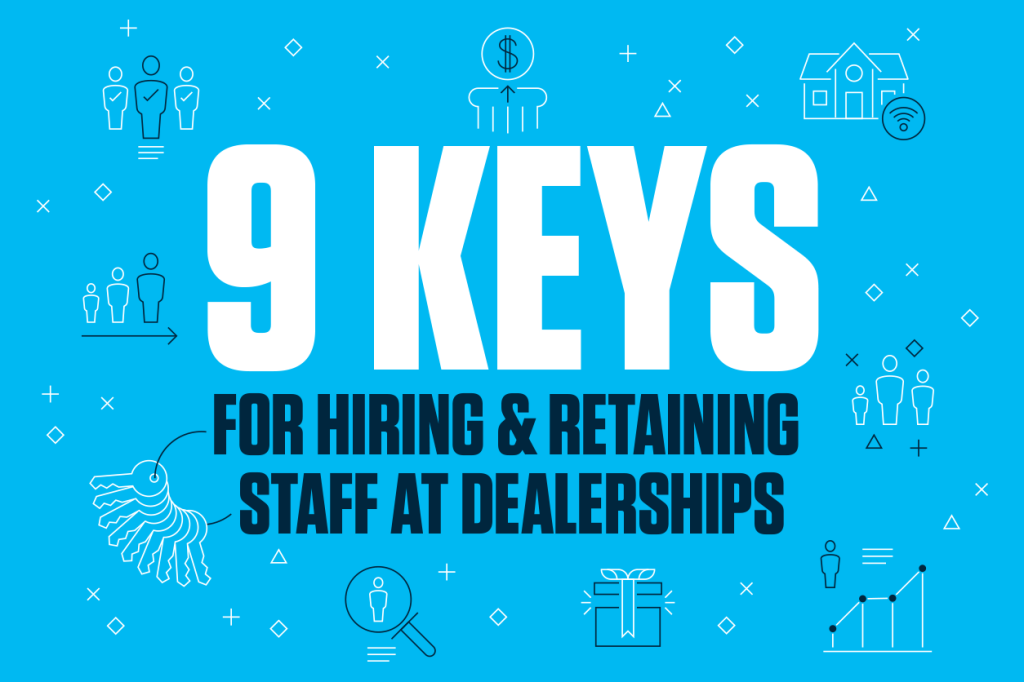
There’s more to the auto industry than selling cars. The people-side of the business is also a huge challenge. And with your dealership needing to attract, retain, and train top talent for new, more advanced ways of doing business, the stakes have never been higher. When it comes down to it: people impact profits. Hiring the right team isn’t just an HR problem. It’s your problem, too. And it’s costing the industry billions every year. Seriously. Discover the 9 Keys for Hiring & Retaining Staff outlined below:

You’re on a quest to deliver the ultimate customer experience. But, the path to success is full of twists and turns—and even roadblocks. If your dealership doesn’t have the right technology, top talent, and the best support in place, you simply can’t deliver the best experience. Fortunately, Dealertrack DMS and the teams at Hireology and Netchex have designed a roadmap that brings all three together. These industry-exclusive integrations offer a powerhouse of connected technologies for your dealership.
Follow along in the visual guide below to see how all three work to bring your dealership the best in cloud-based DMS technology, strategic human capital management, and payroll optimization.

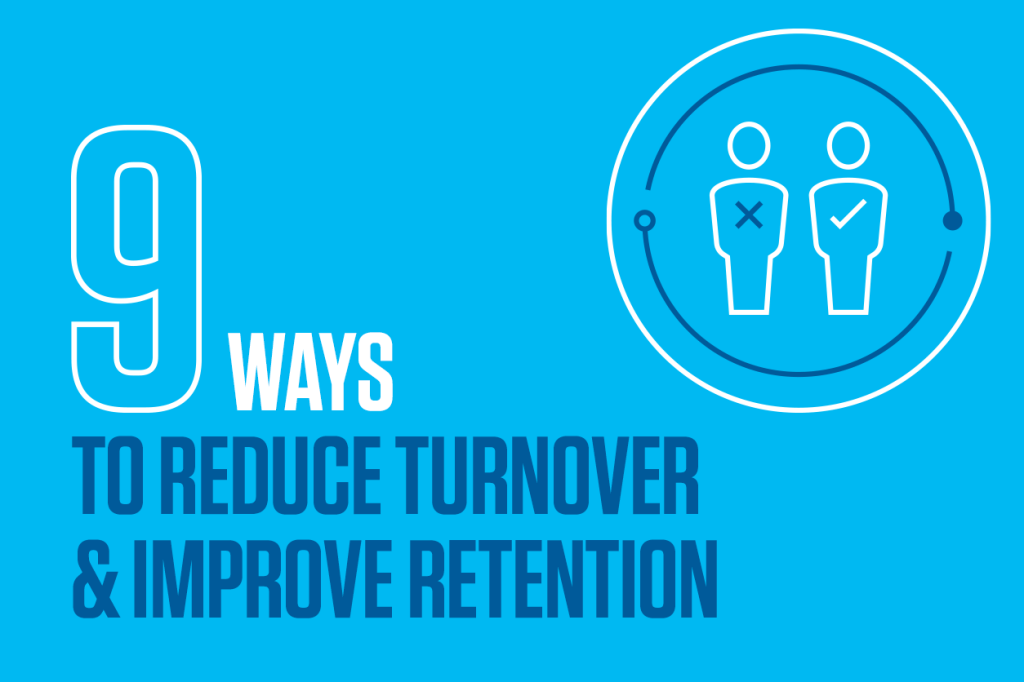
Finding and keeping top talent in automotive retail has always been a challenge. But dealers can do more to think outside the box and find those best suited to grow with their companies and, most importantly, improve the return on their hiring investment. Here are 9 steps for hiring and retaining talent at your dealership.
Employee turnover at dealerships is a huge problem, but most don’t recognize the severity of the situation. Turnover is costing dealers billions of dollars every year. And, according to a NADA Dealership Workforce Study, dealerships drastically underreport their average turnover rate at just 22%. That’s more than half the actual dealership turnover rate identified by NADA, which is 46% for employees and a shocking 80% for salespeople. This discrepancy between perception and reality can be remedied by tracking employment and turnover metrics over time. This involves listing, defining, explaining, and tracking relevant metrics, including voluntary and involuntary turnover and retention rate by department.
In 2020, the average annual pay for a car salesperson in the United States was less than $41,000. Although this figure appears much higher in 2023, some sources show this figure swinging wildly in the opposite direction. This unpredictable compensation model doesn’t bode well for long-term growth or stability. Considering the high cost of turnover—especially in the long run—dealerships face an ongoing staffing challenge due to their current compensation model.
More and more employees, both inside or outside the auto industry, have started to see the benefits of working from home. And, many won’t go back to an all-in-office situation anytime soon. Today’s employees expect greater flexibility moving forward, even from dealerships. Coincidentally, there has been a parallel trend toward remote car shopping and online car buying. Dealerships should take advantage of this trend to align their staff and HR structures to adopt an omni-channel approach to sales—giving customers the option to buy cars in person, remotely, or a mix of both. This also calls for creating new positions for remote and mobile sales people, which has the added benefit of attracting top talent.
In addition to increasing compensation amount, dealerships should consider a separate compensation structure altogether, including a move away from traditional commission-based pay. Some dealerships have already made this move, implementing perks like limiting work weeks to 40 hours and offering 2 days off per week, without reducing wages. The results, in terms of improved employee tenure and job satisfaction, have been immediate and undeniable.
According to a Hireology Research Report, nearly 40% of people choose to begin a new job search to find a better culture. To put the importance of company culture into perspective, just 36.5% of people listed better pay as the reason for starting a job search. Dealerships should implement more employee recognition efforts and do more to engage their employees, giving them more opportunities to think, grow, and feel valued for their contributions. Improved employee engagement, better emotional connection with work, and more efficient work hours are undeniably interconnected. It’s a win-win for employees and dealerships.
Young workers, who grew up with technology, are naturally interested in the latest tech advancements. They view workplace technology as an important perk and understand that the right technologies can make their work easier and more interesting. Implementing integrated technologies that make your employees’ jobs easier and more efficient is a major step toward attracting and retaining top talent. These technologies speed up workflows, remove friction and barriers, and allow employees to focus on what they do best. Plus, integrated technologies appeal to today’s employees and improve your overall brand perception, because, like it or not, your dealership’s brand is inseparably tied to your technology.
Employees become most productive after three years on the job. Unfortunately, the average employee tenure is just 18 months to 2.4 years. In order for your dealership to keep employees (especially top employees) longer and reap the rewards of your investment in them, you have to give them a strong start. That means implementing productive, structured onboarding that focuses on employee retention. According to Hireology’s Adam Robinson, there’s a “strong correlation between structured onboarding processes and employee retention. When new hires take part in a structured onboarding process, 66% of them are likely to remain with a company for longer than three years.”
Ironically, most “human” resources departments are too often tied up in mundane number crunching and accounting work, which takes them away from the day-to-day progress and well-being of actual employees. Outsourcing HR management and utilizing better payroll and HR technology allows your team to shift focus back to your employees, resolving their concerns and ensuring happy productive workers.
Unfortunately, there aren’t as many avenues for women and minorities to explore careers in the auto sales industry. Of course, many of these candidates are among the top, sought- after talent that dealerships should be seeking to employ. When dealerships expand their hiring practices and think outside the boundaries of the typical dealership employee (who often bring baggage of bad industry habits), they have a greater likelihood of finding and keeping the best people for the job.
Finding and keeping top talent is a challenge, but following these 9 steps can give you a leg up in competing for (and keeping) these employees and give you the tools, technology and know-how to improve your return on your talent investment.
To learn more about how your dealership can attract and retain better talent, download our free guide, 9 Ways to Reduce Turnover & Improve Retention.

DRAPER, Utah, Feb. 3, 2021 – Dealertrack DMS, a leading provider of cloud-based technology solutions for car dealerships, announces new integrations geared toward helping dealerships achieve higher efficiency and productivity in today’s digital-first environment at the Cox Automotive Experience and NADA 2021. 2020 proved to be a year of significant change in which dealerships had to pivot to meet evolving expectations of service customers, buyers and team members. This transformation also required retailers to address the operational complexities of the day —approximately 75% of franchise dealerships were switching to digital sales operations according to the Cox Automotive Sentiment Survey— and this doesn’t appear to be slowing down in 2021.
“In these uncertain times, dealerships are more dependent on digital solutions than ever. The need to optimize their technology integrations to prepare for the future, eliminate inefficiencies and ensure their teams have the support they need is at an all-time high,” said Tracy Fred, vice president of operations for Cox Automotive brands VinSolutions, Xtime and Dealertrack DMS. “Today, the average dealership uses approximately seven software integrations simply to complete a sale. The new Dealertrack DMS integrations bring more processes together, adding ease and efficiency to ensure auto retailers can save time and money which translates to better customer service and happier employees.”
New Dealertrack DMS integrations and solutions build on its longstanding commitment to put dealers at the center of every business decision and innovation. Dealertrack DMS is focused on deep integrations that continue to add ease and efficiency to operations while boosting satisfaction where it counts most for dealerships in 2021 and adding profitability across critical cash flow areas, including:
“As a centralized accounting office for multiple dealerships, we rely on fast, easy information from the outlying departments to produce payroll,” said Neal Jackson, controller at Lawley Automotive Group in Sierra Vista, Arizona. “I’ve been doing this since 1993, so whenever there are new solutions like Integrated Payroll, powered by Netchex, I’m eager to give it a try. Pretty much anything I put into Netchex, data-wise, I can get out through a report. With Netchex, I no longer need to do manual time-consuming tasks. It is a huge time saver for me.”
Dealertrack DMS will be highlighting how these new integrations provide dealers with the connectivity and efficiency to optimize operations at the upcoming virtual National Automobile Dealers Association (NADA) 2021 show. For information on all Cox Automotive’s 2021 new offerings, visit www.coxautoinc.com/experience.
About Dealertrack
Dealertrack provides industry-leading software solutions that give dealerships, lenders, and partners the confidence to thrive in an ever-changing automotive market. The company’s integrated suite of powerful easy-to-use products and services helps dealerships and their lending partners grow by increasing efficiency and improving decision-making. Dealertrack is part of the Cox Automotive family, a company that is transforming the way the world buys, sells, owns and uses cars. Dealertrack—along with its unmatched network of dealership and lending partners—is improving the car buying experience by embracing the technologies that will shape the future of automotive retail. For more information about Dealertrack, visit www.dealertrack.com.
About Cox Automotive
Cox Automotive Inc. makes buying, selling, owning and using vehicles easier for everyone. The global company’s more than 27,000 team members and family of brands, including Autotrader®, Clutch Technologies, Dealer.com®, Dealertrack®, Kelley Blue Book®, Manheim®, NextGear Capital®, VinSolutions®, vAuto® and Xtime®, are passionate about helping millions of car shoppers, 40,000 auto dealer clients across five continents and many others throughout the automotive industry thrive for generations to come. Cox Automotive is a subsidiary of Cox Enterprises Inc., a privately-owned, Atlanta-based company with annual revenues of nearly $20 billion. www.coxautoinc.com
Media Contact:
Lisa Aloisio
Lisa.Aloisio@coxautoinc.com
c. 404-725-0651
###
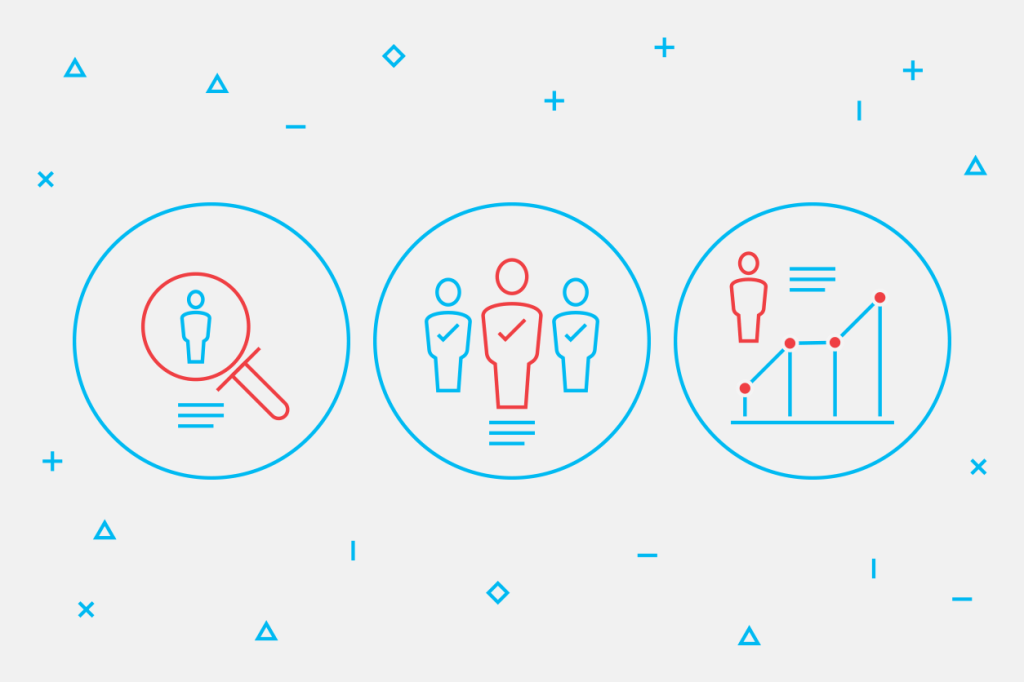
People have always impacted profits in auto sales. When dealerships hire the wrong people, fail to train them properly, and send them off to the frontlines of auto sales, they often make the wrong decisions behind the scenes and make the wrong impressions on customers.
But as the industry shifts to a more digital model and more customers buy cars online, hiring, training, and keeping the right employees matters more than ever before. In an increasingly complex digital world, those dealerships that take steps to attract, hire, and keep top talent will find a competitive advantage in a new age of digital sales.
Today’s top candidates seek out companies with brands and reputations that fit their perceived idea of providing a good place to work. Young workers demand that their employers supply them with the latest technologies, in the same way they view health insurance, paid time off, and other benefits. They understand that having the right technologies can make their work easier and more interesting.
Implementing integrated technologies—that speed up workflows, remove friction and barriers, and allow employees to focus on what they do best—can help dealers attract and retain top talent. Especially as more and more employees are required to learn and adapt to ever-changing, and increasingly more complex industry regulations in a digital workspace, those dealerships that provide their people with the means of doing their jobs effectively will attract and keep employees that positively impact profits.
Even when dealerships do everything they can to attract and hire the right candidates, the industry turnover rate is so high (46% for employees and 80% for salespeople), it’s costing dealers billions of dollars every year. That’s because employees become most productive after three years on the job. But with an average employee tenure of just 18 months to 2.4 years, dealers aren’t reaping the productivity rewards after spending considerable time and money to find and hire employees.
Hireology CEO Adam Robinson suggests that in order for dealers to keep employees longer (and see the results of their productivity), they must implement onboarding that is more structured and focused on employee retention. When dealers do this, 66% of new hires are likely to remain with a company longer than three years. The importance of proper onboarding is further punctuated by the fact that new employees are expected to learn the ins and outs of a digital retailing environment. If they’re not given proper training from the start, with technology playing a central role in the onboarding process, dealers risk losing employees and the money spent to bring them onboard.
Attracting, finding, and hiring the right employees requires broadening the pool of potential candidates to include a greater diversity of backgrounds, thoughts, and people. This means making more of an effort to find and interview more diverse recruits, including adjusting job descriptions that only appeal to existing industry workers and reaching out to different audiences. That includes recruiting candidates with an understanding of the technology they will be required to use as the industry continues to evolve.
Of course, many of these candidates are already among the top, sought-after talent that other dealerships are seeking to employ. So, in addition to diversifying the employment search, dealerships can implement three specific practices to attract and hire the very best applicants.
When dealerships expand hiring practices, onboard with employee retention in mind, and implement integrated technologies, they can recruit and keep employees that will positively impact profits, especially as the industry continues to shift to a more digital model.
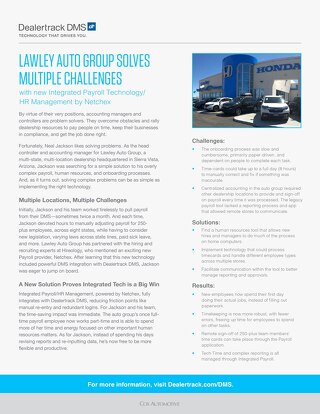
Learn how our dealer partners manage complex Payroll and HR processes with new Integrated Payroll and HR Management, powered by Netchex.
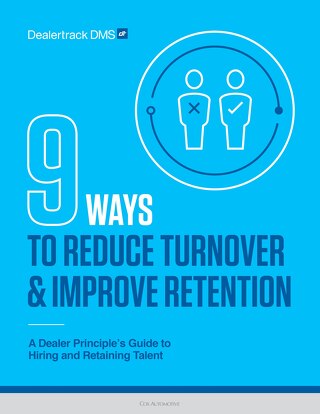
A Dealer Principal's guide to navigating burnout and attracting top talent.